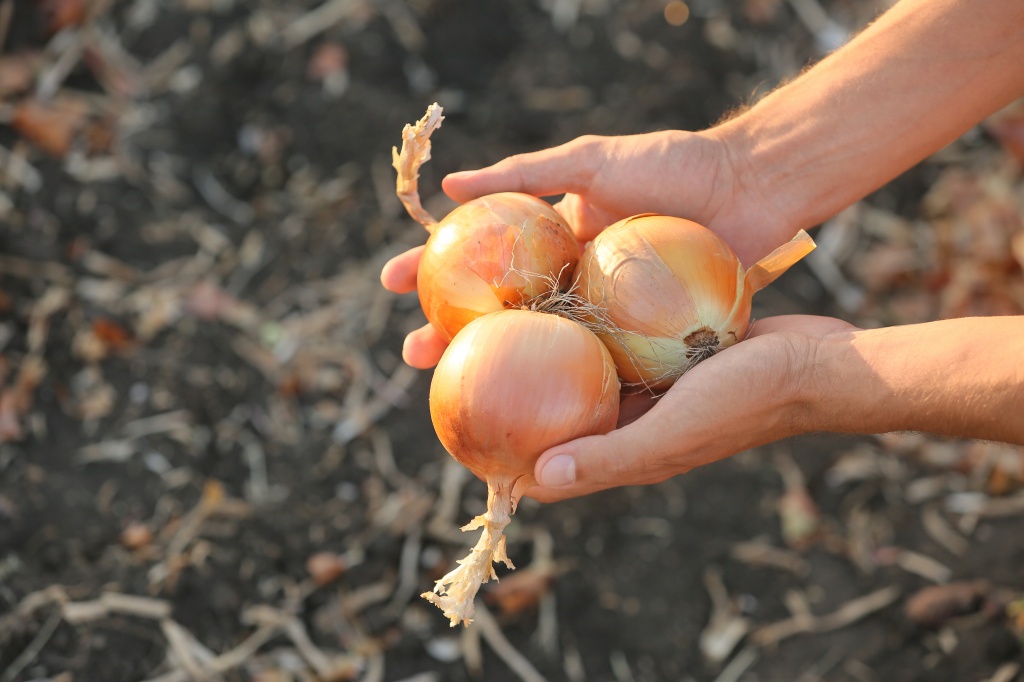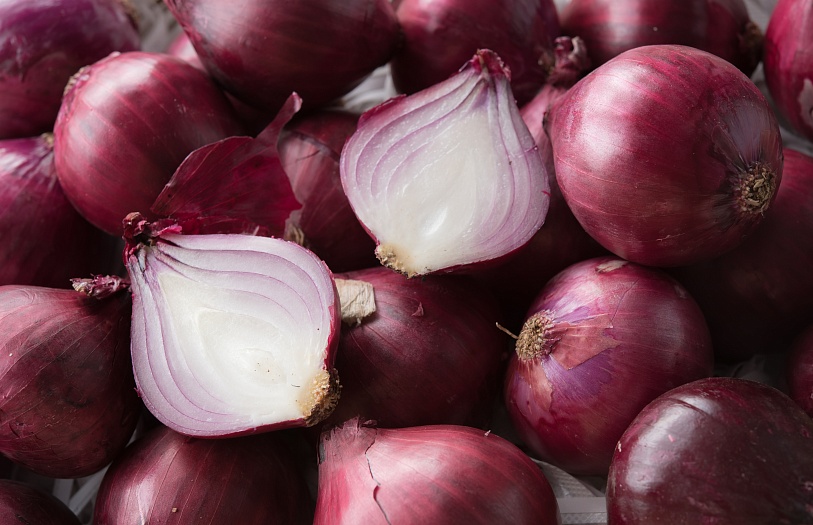Drying onions: common truths and misconceptions
19.01.2022 | Onions
We always write about how a properly designed vegetable storage facility and microclimate system will maximize the preservation of the onion crop. Ventilation will help minimize the amount of loss while maintaining the original quality of the product. However, before putting in storage, onions must go through a very important stage: drying.
So, to dry or not to dry? What happens if you don't dry onions? How should onions be dried?
Drying options:
1. Outdoor air only;
2. Outdoor air in combination with heaters and coolers.
The first few days are crucial, especially if the onions have been harvested in relatively high temperatures (25°C and above) or during fairly heavy rain. While in temperate climates the combination of high temperatures and heavy rainfall is only occasionally seen, in tropical climates it is common. If left unchecked, onion shelf life can be reduced by 20-80% from exposure to such weather conditions.
Among other things, heavy rain and high temperatures increase the risk of bacterial infection. The bacteria Erwinia carotovora and Pseudomonas alliicola are widely distributed in the atmosphere and soil and are carried by raindrops. When these droplets reach the leaves of the plants, the bacteria seep in mainly through fresh lesions or pores. Throughout the life cycle of an onion, these bacteria will slowly but surely "seep" into it, moving through the leaves to the neck of the bulb. The same thing happens with the spores of the Botrytis aclada fungus that causes onion cervical rot.
Consequently, the bulbs should be harvested as early as possible and at the "right" time: usually when half of the plant is still green. Many farmers do not take this rule into account, leaving the plant in the ground in the hope that this way they will increase their harvest by a few tons. They are right about one thing: it will increase the quantity of the crop, but not its quality. Such greed can be detrimental to the crop, so it is much better to harvest onions on time. A global study conducted over several years by the Dutch PPO Institute showed that if onions are left in the ground to "germinate," the net weight of the crop does increase by 7.1%. But after drying, this increase is reduced to 1.1%.
Drying onions requires exposure to dry air, or rather air with very low relative humidity. The legend that drying quickly closes the neck of the onion, allowing moisture to accumulate inside the bulb, is just a myth. Only when the onion was picked and harvested and how quickly it was dried affect the level of rot, as these two factors can drastically reduce the amount of bacteria entering the bulb and the time it takes for them to multiply inside it.

Most often onions are dried outdoors in the field. Under these conditions, it takes 10-14 days or more for the bulbs to dry properly. During this number of days, the bacteria and fungi that cause neck rot have enough time to penetrate the bulb, actively spread, and completely ruin it. In addition, the temperature differential that occurs at the end of the day with the onset of night (often over 4°C) causes dew to form and settle on the bulb. Drying is considered successful when the neck of the bulb can be rolled between the index finger and thumb.
A second, more productive option is vegetable storage drying, which is done immediately after the onions have been placed in the storage chambers. If onions are dried in this way for 3-4 days, bacteria and fungi barely have time to penetrate the onion. The air fed into the chambers is heated to a temperature of 35-38°C. It is very important not to forget the cooling stage after drying the onions.
Still have questions? Or do you need a vegetable storehouse for onions? Our specialists will answer all your questions by phone +74952293903 or e-mail info@agrovent.com!

